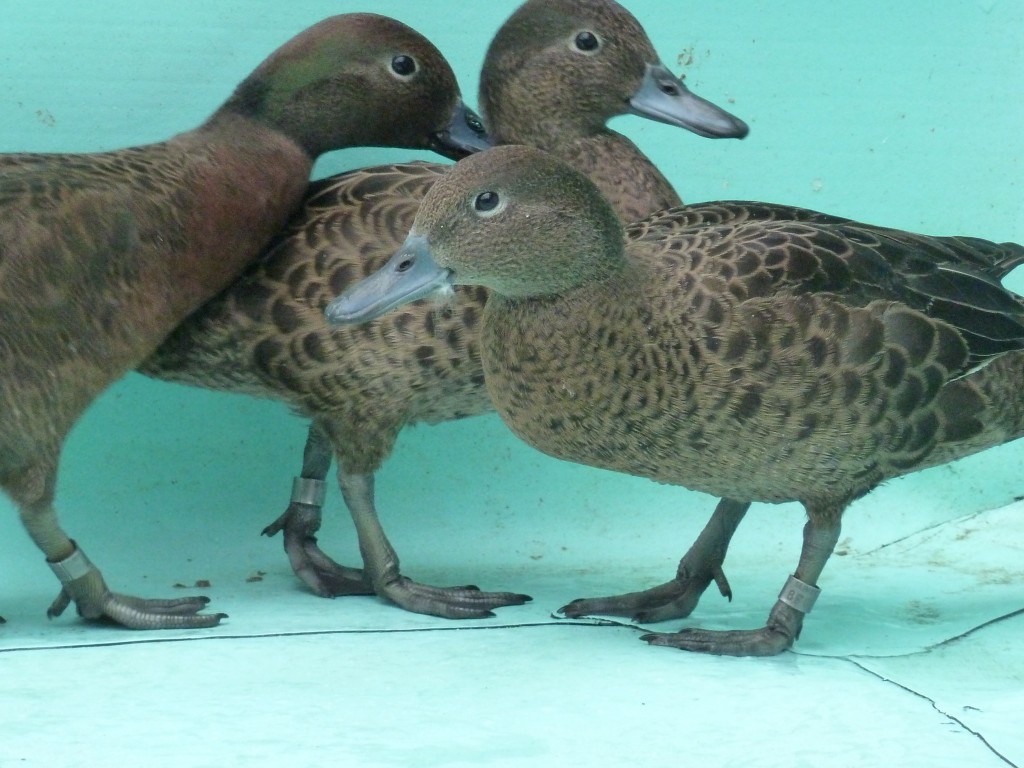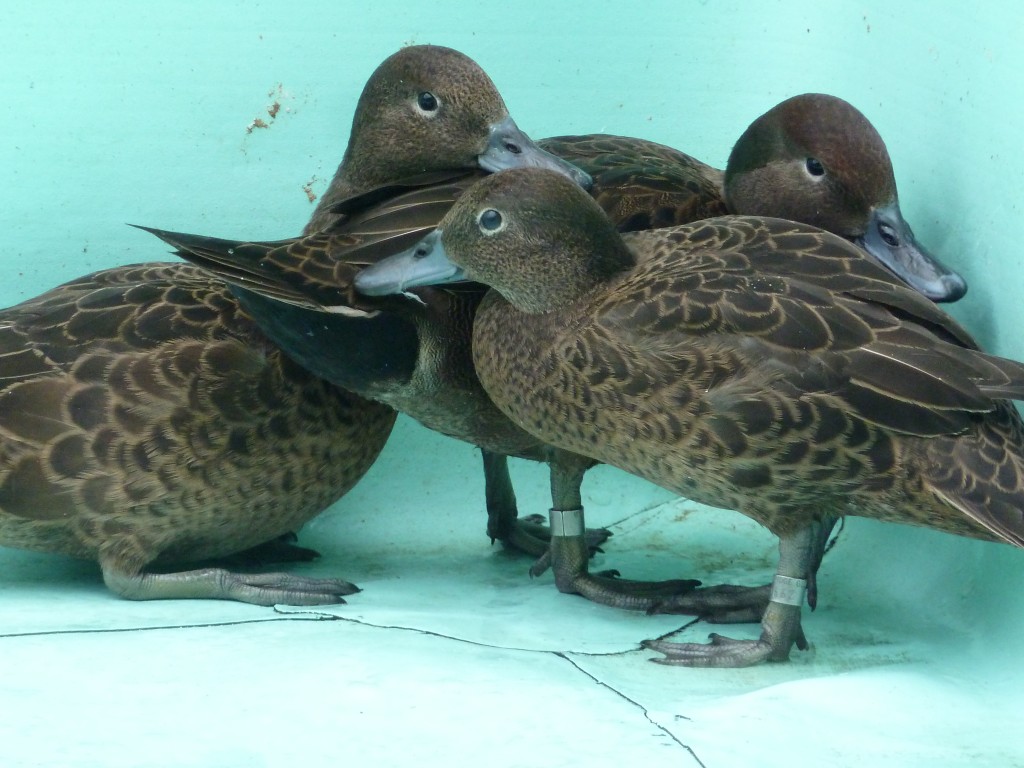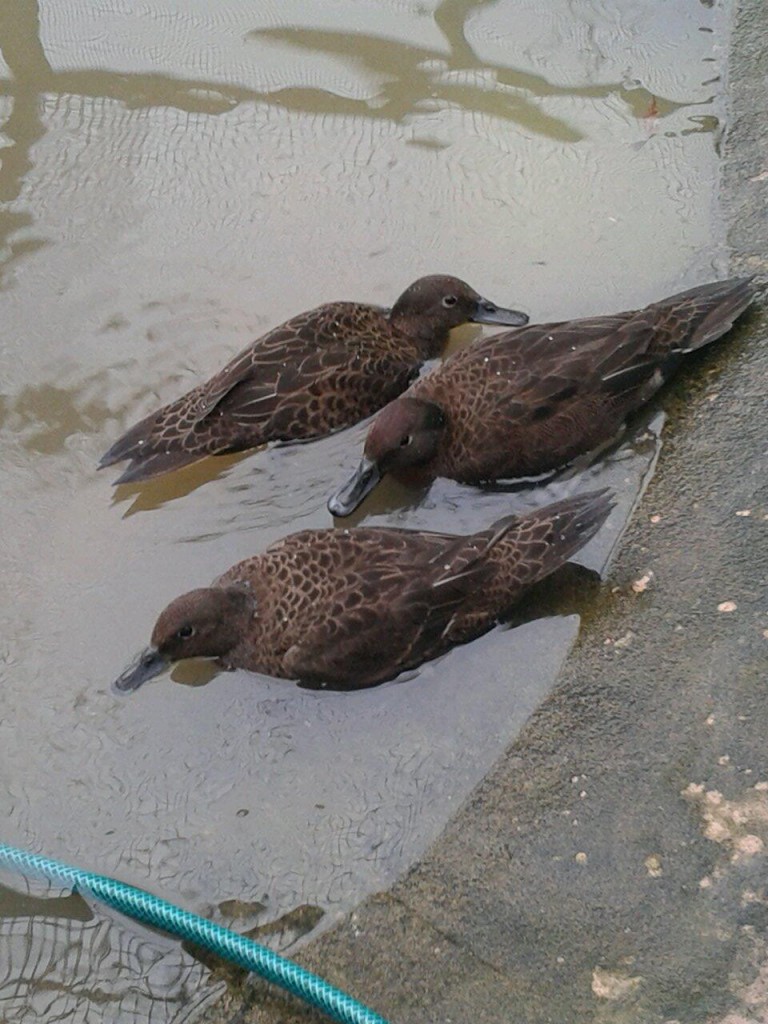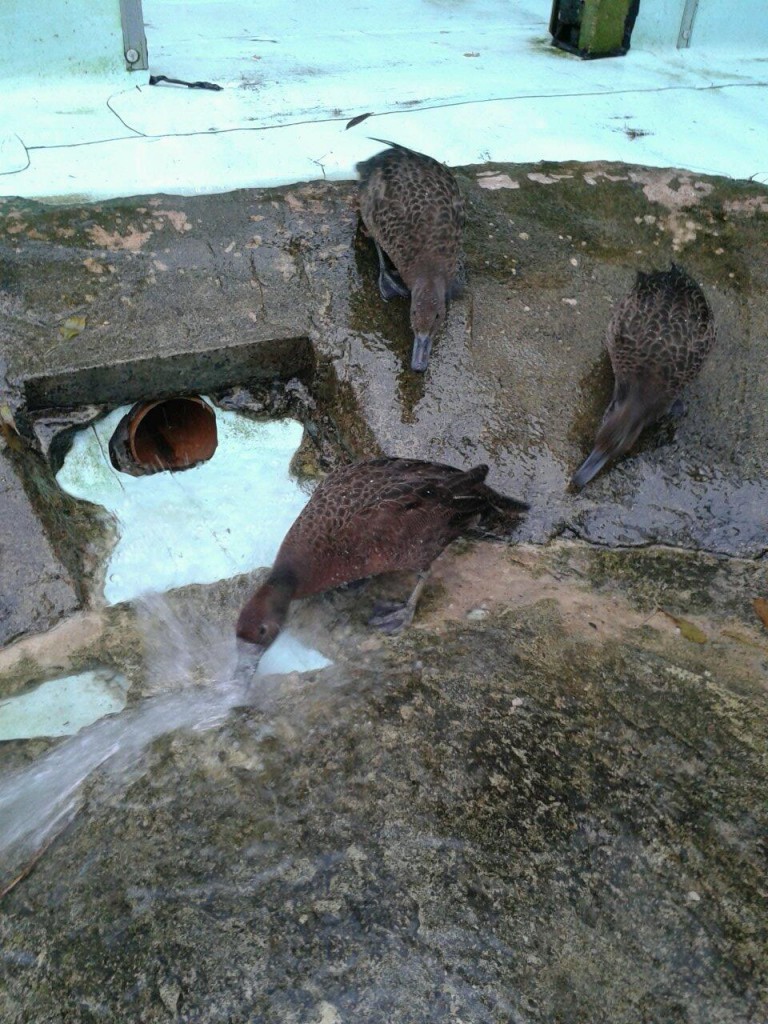Hurrah for the little brown jobs (LBJs)!
The small brown ducks are having a moment, a moment of rarity. The Madagascan pochard has been pushed to the brink and back, the Baers pochard is on the brink. Ferruginous duck numbers are declining, and small brown endemics like the Koloa and Laysan remain isolated and at risk.
Is it a surprise that the boring brown ducks are undervalued and little observed? Is it a surprise that captive collections and zoos do not prize these birds for exhibit due to their inability to capture the imagination of an audience? In a world where the survival of a species often depends upon public interpretation, and conservation initiatives depend upon brightly coloured flagship species; the LBJs are moving into the shadows.
I think that it's time to change! I'd love to be able to conceive of a way that conservation initiatives can approach future generations with inspirational examples using wild behaviours, rather than aesthetics. I would love to see captive collections achieve exciting wild behaviours in rare birds using innovative changes in enclosure design.
Here for example is the unique and captivating New Zealand brown teal. Brown body, grey legs, mottling, eye ring, dull beak, secretive nature, tendency towards aggression; all descriptions that do not make this species desirable on a zoo collection plan and nigh on impossible to exhibit. And yet this brilliant species have brilliant characteristics, a fascinating evolution, and an attitude to rival any group of naughty boys...

New Zealand is a remarkable country. Ecological niches most often occupied in other countries by mammals such as cows and rodents, kangaroos and moles, were filled by reptiles, insects, or birds. Locally known as the Pateke, this remarkable little duck has evolve to fill a niche normally reserved in Northern temperate climates for the rodents! Fossil evidence indicates that the species is over 10,000 years old, and early settlers described the species as common. How sad then, that the species is currently considered Endangered but Increasing from 2000-2500 individuals.
The impact of colonial man upon unique ecological systems is evident once again. Nearly 50 bird extinctions have occurred since New Zealand was colonised; from flightless specialists to the remarkable monsters. Hundreds of species remain at risk from humanities non-native introductions and mis-guided behavioural concepts. Surely then, the nasty little rodent duck can be ingenious enough to survive? No.

www.brownteal.com is a brilliant website. It really covers every aspect of species conservation from an approachable angle, and sings about diversity and ecology.
The Pateke has many qualities than can justify it to a breeding programme and collection plan. Due to threats from aerial predators, the Pateke has become a day time recluse, choosing to hunker down in dense vegetation during the day. In this state they appear vulnerable and sensitive, but after dusk these ducks have the attitude of bull fighter! They are cocky, aggressive, and dominant. If a duck could swagger, these would. Although social in the winter period, during the breeding season these monogamous ducks will hold territories from between 0.2km - 0.4km squared, and genuinely turn into angry little savages. Birds have been witnessed both mercilessly chasing and being chased in turn, and they seem to thrive in these conditions as if the aggression gives them a genuine boost!
But we shouldn't be scared of displaying aggressive birds; after all they can't take us on can they?! This remarkable behaviour is a product of an evolutionary process where mammals were not predominant, and this remarkable duck represents a feisty stoat or a big black rat. What a bird! Imagine a section of land in Northern NZ and picture the cross section of avian species. The giant Moa, through the Casowari, the phenomenal Kea, to the little brown teal. What better way to discuss evolution?

We've had a good enough group of them for the last 10 years. We only breed them rarely, and have a few on loan. As you can imagine, they take up a lot of space! It is rare you find a bird that you can keep with other species let alone it's own species... Just when you trust them, they pounce!
2009 brought us a little group of 5. 2013 has brought us a little group of 3 (see above and below.) You can see the irridescent green coming through in the male, and the 2 females up above. At this point, both females are equal, no one bird shows a weakness, they are alone in isolation, and have lots of things to keep them occupied; for now...
These 3 are at the present time pretty cute! When you enter the pen they slink into the corner, each of them fighting to be the one furthest away. When it becomes clear that you have come to clean and not to catch, they jump out of the water and get involved! These just love playing in the hose, the male especially. He loves filtering the surge of water displaced by the flow, and will float underneath the spray causing shoot offs which the females enjoy. You could even call it harmony!
I can't deny their aggression is frustrating, but I wouldn't change it for the world. My work is dedicated to encouraging natural behaviours in the birds we try to breed and exhibit, to convince our visitors that species conservation is worth fighting for.


